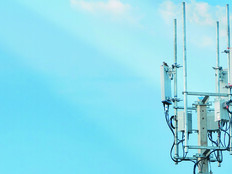What Is a Smart Building Automated System?
Smart buildings leverage technology to create “a sophisticated understanding of the overall health and operation of a building,” says a GSA spokesperson. “GSA utilizes this technology across its portfolio to improve energy efficiency, operations and system reliability.”
When Government Accountability Office analysts spoke with GSA experts, they came away with a data-driven vision of the emerging smart building. “These officials told us that analyzing data from buildings equipped with smart building technologies allows GSA building managers to more directly oversee the operations of these buildings,” says Lori Rectanus, a director of GAO’s physical infrastructure team.
GAO found two key technologies undergirding this effort. First, smart buildings rely on internet-connected advanced utility meters to measure utility use (such as electrical power, natural gas or water use) in real time. Second, the agency highlighted the use of GSAlink, a software program that collects and analyzes data from advanced meters and uses this data to alert building staff to potential problems.
Experts say that a smart building approach could do more than just save the government money. As a digitally connected space, a smart building can “enhance the user experience, increase productivity, reduce costs and mitigate physical and cybersecurity risks,” says Michelle Meisels, Deloitte’s engineering and construction practice leader.
Government can leverage smart technologies to improve workers’ daily lives. “You can use these technologies to get better comfort, space utilization and customized lighting to meet the occupants’ preferences. Ultimately, you are driving better productivity,” says Casey Talon, a research director in Navigant Research’s intelligent building management group.
While smart building automation systems have been around since the 1970s, past iterations required manual inputs or were geared to work on obsolete hardware. The 2000s saw the rise of software interfaces for controlling these systems, and more recently these systems have begun to incorporate input from sensors and Internet of Things devices, Meisels says. As IoT and building management converge, building managers will be able to gain greater insights into building operation.
In a modern BAS deployment, “there are networks and sensors, specific controllers that can be utilized together to gain insights and direct changes within the systems,” Talon says. “You drive up and your access badge identifies what parking spot you go to. The elevator takes you directly to your floor, a mobile app tells you what desk, and the lighting and heating there are set for your comfort levels. It’s a really customized experience.”
What Is an Energy Management System?
Energy management systems bring together a number of key technologies with the goal of driving energy conservation and providing cost savings. Such systems “analyze electrical, water, gas and steam meter data to target areas of improvement to reduce overall energy usage,” the GSA spokesperson says. “In some cases, the EMS may be included in the BAS design, or it can operate alone.”
Energy management systems in smart buildings “are those systems that drive energy conservation and help deliver the dual benefits of supporting the environment and providing cost savings,” Meisels says.
One of the chief advantages of a modern energy management system is its ability to be proactive rather than reactive.
MORE FROM FEDTECH: The Army is exploring smart city Internet of Things tools.
What Is a Building Automation System?
At the heart of the smart building is the building automation system (BAS), a software implementation that ingests data and makes automatic adjustments to building performance. “A BAS generally takes all the controls required to operate a building and rolls them up into a user-friendly interface. GSA uses BAS in its buildings for operations, system control and maintenance,” says the GSA spokesperson.











